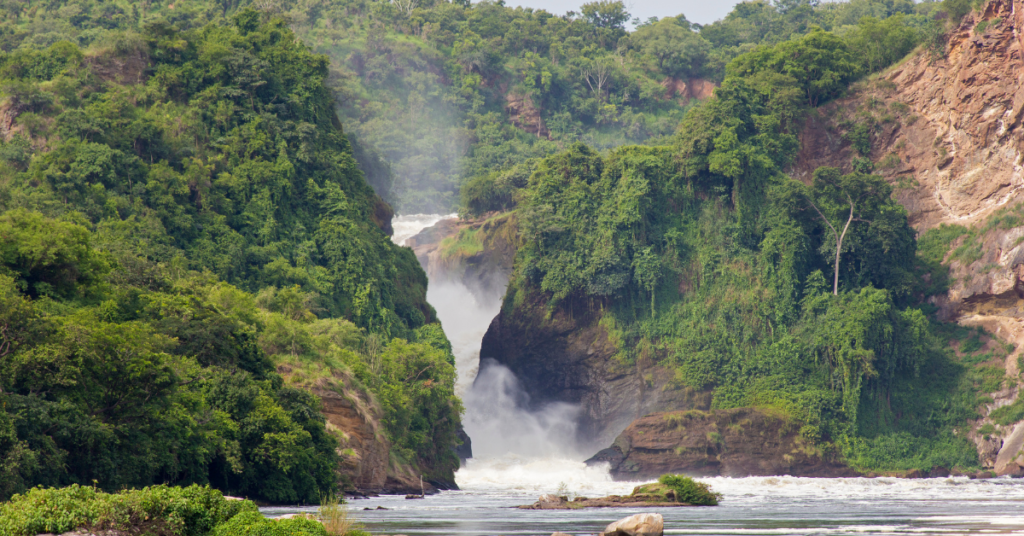Kampala is like a burst of energy compared to the quiet villages and stunning nature elsewhere in Uganda. It’s loud, it’s bright, and yeah, it’s a bit all over the place. But trust me, it’s all part of the charm!
So, I’ve heard some people say they’re thinking of just skipping Kampala when they visit Uganda because they’ve heard there’s not much to see or do there. Now, I get it, rumors spread fast, and it’s easy to just go with what everyone else is saying. But, after I spent some time in the city myself, I just knew I had to share my experience and let everyone know that Kampala is definitely worth a stop, even if it’s just for a day or two.
But here’s the real talk – Kampala, with all its buzz and liveliness, might not be everyone’s cup of tea. And that’s totally okay!
But if you decide to visit the city, I know it might feel like a lot at first, but give it a chance, dig a little deeper, and you’ll find some super cool stuff that tells the story of Uganda’s past, with all its ups and downs.
So, if you’ve got a little wiggle room in your travel schedule, I’d totally recommend hanging out in Kampala for at least a day. It’s like a whole new world compared to the rest of Uganda, and it’s pretty cool to see the contrast. If you can squeeze in an extra day, even better! That way, you can check out some of the awesome spots that are a bit farther out, like the super chill Wamala Tombs just outside the city.
But, let’s get to the important part of this article. Here are the top 15 amazing activities in Kampala!
Top 15 Amazing Activities in Kampala
Kasubi Tombs

If you’re into history and cool old places, you’ve got to check out the Kasubi Tombs. It’s where four Buganda Kingdom’s Kabakas (that’s what they call their kings) have been laid to rest. This place used to be super important in Kampala until 2010. But here’s the twist: the main building caught fire! There are still whispers about whether it was an accident or someone did it on purpose.
They’ve been fixing it up ever since, but even with the renovations, the place is super interesting. When I went, this really fun guide told us all about the place and why it’s so special to the Buganda People. Around the main tomb, there are these smaller buildings with roofs made of reeds – super cool! One of them is the Royal Drum House and then there are tombs with graves of the Kings’ wives. Plus, there’s this modern-ish looking place where the kings’ families lived after they passed away.
Oh, and if you’re wondering how to get there, just hop on a matatu from the old taxi park in Kampala. Or if you see a minibus heading to Hoima, wave it down. Bring 30,000 Shillings for the entrance, and you’re all set!
The Gaddafi Mosque
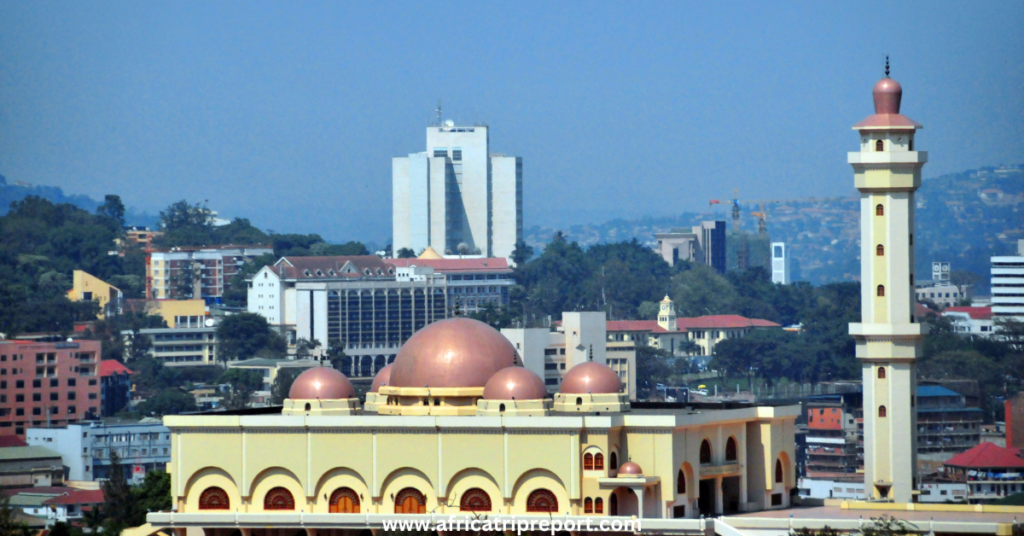
Gaddafi Mosque is the central spot for all things Muslim in Uganda, and it’s where the Uganda Muslim Supreme Council has set up shop. It’s HUGE, probably the biggest mosque in the whole country, and get this – it can fit almost 20,000 people!
If you’re not from around here, you’ll need to grab a ticket for 20,000 UGX, which is something like $5.4. But it’s totally worth it because you get to go on this mini tour inside the mosque and the absolute best part? Climbing up the minaret. There are about 300 steps, and it’s a bit of a twisty journey, but the view? Out of this world! You can see the whole of Kampala from up there. My tour guide was this super nice older dude who told me all these awesome facts about the city while we looked out over it.
So, a bit of history for you – Idi Amin Dada, the former leader of Uganda, actually started building this mosque back in 1972. But then, Gaddafi, the ex-leader of Libya, visited and was like “Let’s make this thing even bigger!” and he paid for the whole project. That’s why everyone started calling it the Gaddafi Mosque. Though, after Gaddafi passed away, they decided to change the name to Uganda National Mosque.
Read more: The Ultimate Jinja Travel Guide
Owino Market

Right smack in the middle of downtown Kampala, Owino Market is this wild, bustling hub of activity. It’s massive—one of the biggest markets in Uganda, in fact. Every day, over 20,000 people flood into this place. You can find pretty much anything here: gorgeous African print fabrics, second-hand clothes, shoes, bags, food, electronics, veggies, herbs, medicines—you name it, they’ve got it.
Now, the government tried to change its name to St. Balikuddembe Market to honor a martyr from back in the 1880s, but everyone still knows it as Owino. It just kind of stuck.
If you’re looking to grab some souvenirs without breaking the bank, this is your spot. But heads up, you’ve got to be ready to bargain, especially if you’re a Mzungu (that’s what they call foreigners here). Prices tend to shoot up when they see you coming. But trust me, it’s worth it. You can score some really cool stuff from Uganda at great prices.
Uganda Museum
It’s the biggest museum in the whole country, and it’s been around since 1908. Can you believe it? It’s also said to be the oldest museum in East Africa!
This place is like a treasure trove of Uganda’s nature and culture. They’ve got a fantastic collection, focusing a lot on ethnography. When you walk around, you’ll see loads of traditional tools, beautiful handicrafts, dresses, and even musical instruments. They’ve got sections on human evolution and the country’s wildlife too.
Now, I’ve got to be honest – the way they’ve set everything up might feel a bit old-school, but trust me, the stuff they’ve got and the stories they tell are super interesting. You can find the museum in the Mulago Neighbourhood, just north of the city centre. Just hop on a matatu from the old taxi park, and you’ll get there in no time.
And hey, while you’re in the area, the Uganda Wildlife Authority is just around the corner. It’s the perfect spot to sort out any permits you might need for visiting the national parks, and yes, that includes the Gorilla Trekking Permits!
Baha’i Temple
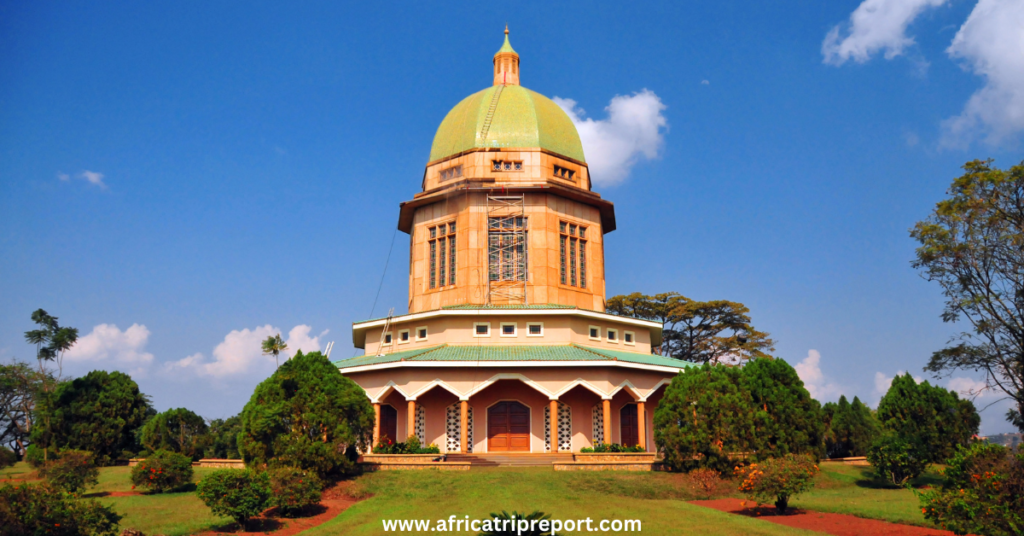
In Kampala, there is a super cool and unique place – it’s a Baha’i temple, and guess what? There are only a few of them in the whole wide world! This faith started in Iran back in the 1800s, and it has this amazing message about how all of us humans are connected in spirit, and how all religions are really just one big family.
The temple itself? Oh, it’s absolutely gorgeous – a real feast for the eyes! And it’s surrounded by these lush, beautiful gardens. It’s not just about the looks though; visiting this place is a chance to learn about a religion that’s all about peace and unity.
Nakasero Food Market
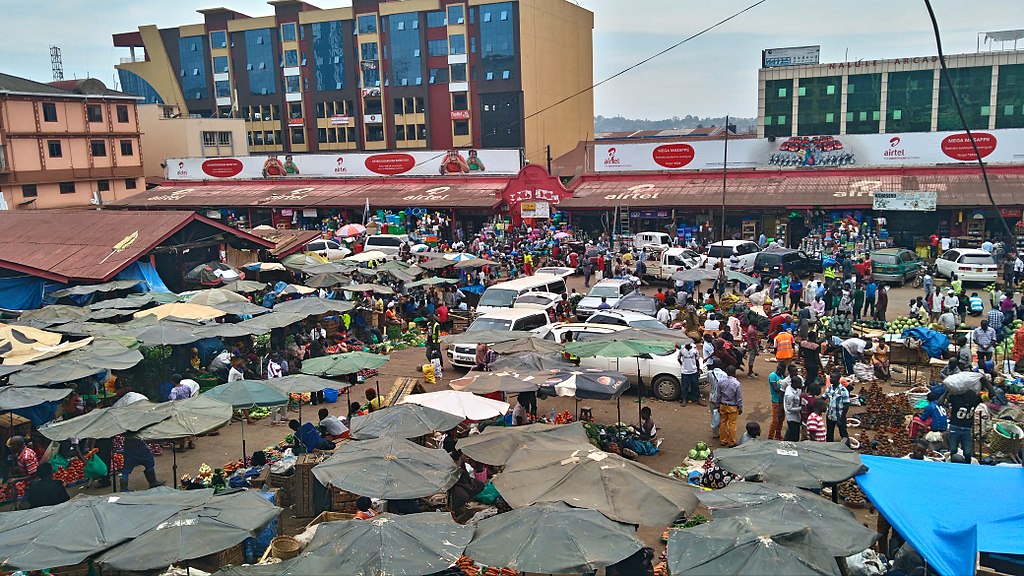
This place is right in the heart of downtown, and it’s a whole different vibe compared to Owino Market. Nakasero is all about food – we’re talking fresh fruits, veggies, fish, spices, and so much more. Oh, and they’ve got a section for livestock too.
Pro tip for you guys: there’s this warehouse nearby with stairs. Climb up and boom – you’ve got yourself an epic view of the whole market. Perfect for those Insta-worthy shots, trust me!
So, a bit of history for you – Nakasero Market has been around since 1927, making it the oldest market in Kampala. And every day, it’s buzzing with over 10,000 people working there. Isn’t that just mind-blowing?
Now, compared to the wild and bustling Owino Market, Nakasero is like a chill day at the park. It’s open-air, way less hectic, and it’s just the spot to grab some fresh-cut fruits or a refreshing juice. And hey, if you’re feeling daring, why not give the fried grasshoppers a try? I did, and you can check it out in my vlog – they actually taste like salty chips!
Wamala Tomb
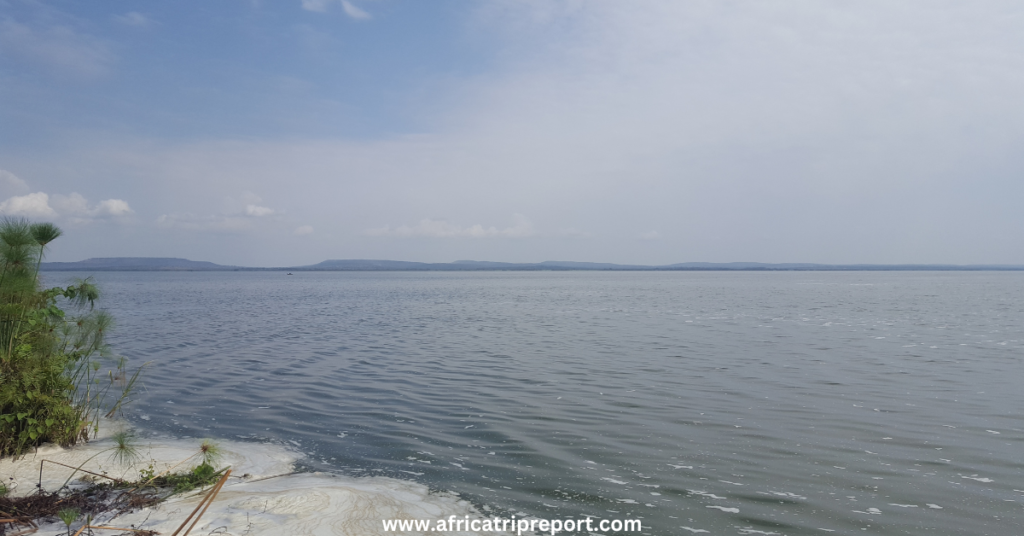
It’s another king’s resting place, but unlike the well-known Kasubi Tombs, this one is a bit off the beaten path, giving it a peaceful vibe amidst stunning rural surroundings just outside of Kampala.
This little spot is quite a gem, and it’s actually not as crowded as other tourist spots. The thatched-roof building here is a shrine that holds something pretty special: the jawbone of King Kabaka Ssuuna II from the 19th century. And get this – it’s believed that his spirit is still around, housed in that very jawbone. The king, well-known for his large family of 148 wives and 218 children, definitely left a mark in history!
The inside of the shrine is like a step back in time, adorned with an incredible array of traditional spears and shields, all taken care of by the king’s own descendants. It’s like a living piece of history, right there in front of you.
Getting there is pretty straightforward. The tomb is close to the highway leading to Hoima, so you can catch a matatu or a bus in that direction, and they’ll drop you off on the main road. From there, it’s either a 30-minute walk or a quick, albeit bumpy, 10-minute boda-boda ride to the tomb. Oh, and it’s super affordable to get in – just 20,000 Shillings.
Mengo Palace

If you’re roaming around Kampala, you’ve got to check out this place atop Mengo Hill in the Lubiri suburb. It’s the home sweet home of King Ronald Muwenda Mutebi II from the Buganda Kingdom. Now, it’s not super old or anything because the original palace had a bit of a rough time back in 1966. That’s when Milton Obote took control of the country, and Kabaka Mutesa II had to make a quick getaway.
So, what you see now is the new palace. And let me tell you, it’s a pretty sight with all its manicured lawns and blooming bushes. But don’t let the calm vibes fool you. This place has a pretty dark history. Back in the days of Idi Amin, the basement here was used for some really scary stuff – we’re talking imprisonment, torture, and even executions of so many innocent folks.
But here’s the deal: you can actually visit these notorious prison cells, and a guide will walk you through the whole thing. They’ll share stories, point out messages left behind by the prisoners on the walls, and really help you understand what happened here. It’s definitely a bit chilling, but it’s one of those things that’s important to see and learn from.
The whole guided tour will set you back just 15,000 Shillings. So, if you’re up for a visit that’s a mix of beauty, history, and a reality check, this palace is the spot. Just remember, the inside of the palace is off-limits since the king still lives there.
Read more: The Ultimate Guide Of Murchison Falls National Park
Kabaka Mwanga’s Lake
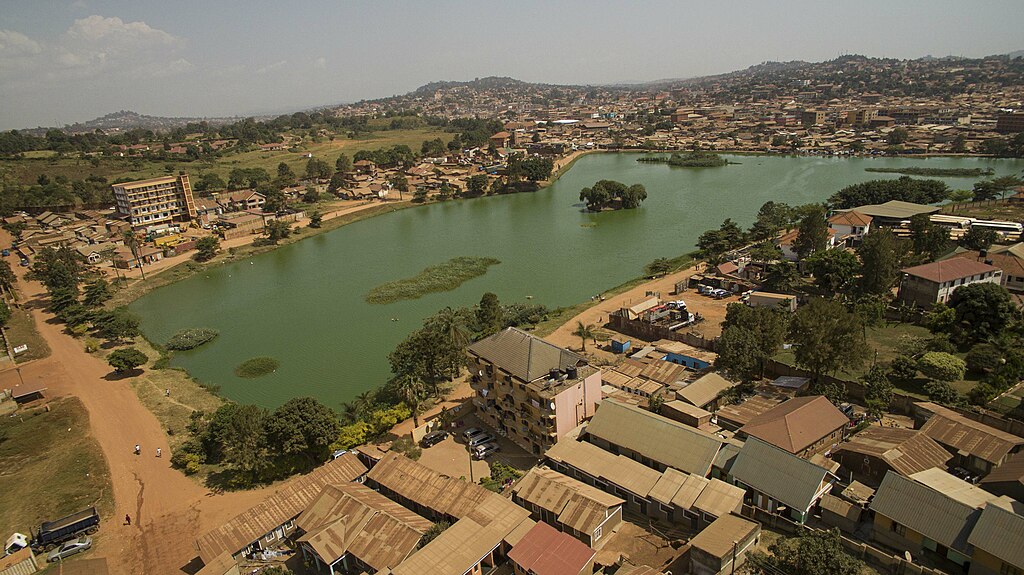
Right next door to Mengo Palace, you’ll find this man-made wonder – an artificial lake that’s got a pretty cool story behind it. Way back in 1880, King Mwanga II decided he needed a quick getaway plan in case things got dicey with the British Empire, so he ordered this lake to be dug. He had this grand idea of connecting it all the way to Lake Victoria, but that plan never really got off the ground.
Fast forward to today, and what we’ve got is Uganda’s biggest man-made lake, and it’s turned into a pretty sweet spot for a leisurely walk. Compared to the hustle and bustle of the rest of Kampala, this place is like a little oasis of calm. And here’s a fun thing – the lake is home to loads of cattle egrets. You’ll see them hanging out on the little islets in the lake, just doing their bird thing.
The lake is super easy to find; it’s just southwest of Mengo Hill. So, if you’re in the mood for a bit of chill time and maybe want to bird-watch or just enjoy being near the water, this is the place to be!
The Namirembe Cathedral
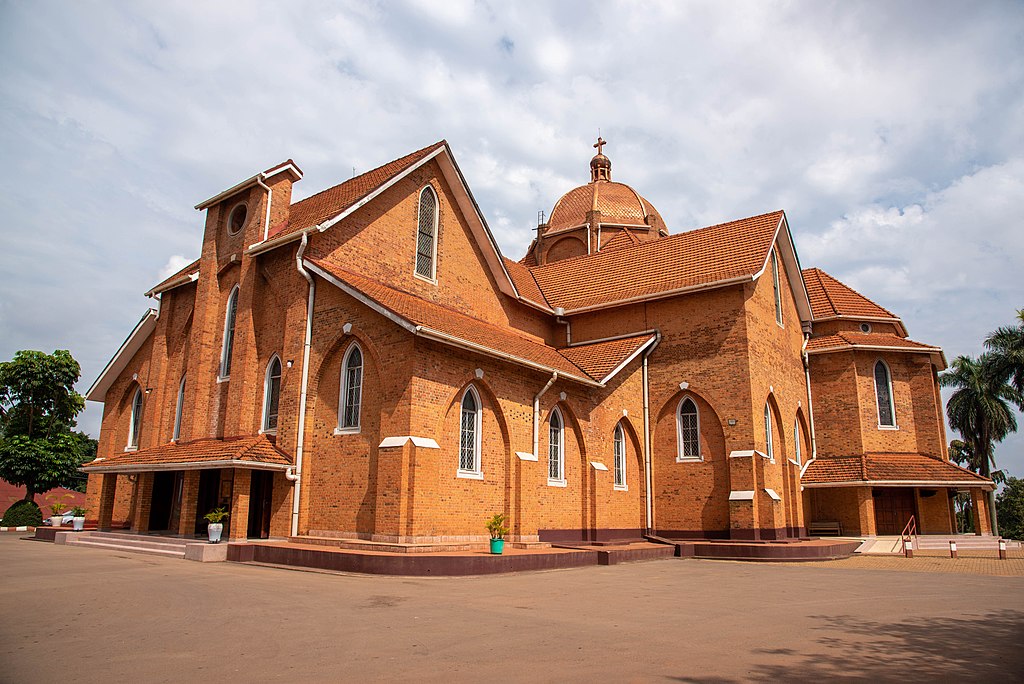
Now, if we’re talking about famous churches in Kampala, we absolutely have to mention Namirembe Cathedral. Trust me, this place is something else! It’s been standing tall since 1890, which makes it the oldest cathedral in all of Uganda.
The location? Oh, it’s just perfect. It’s perched right on top of one of the original hills of Kampala, making it a favorite spot for visitors and locals alike. You can actually spot its magnificent dome from various parts of the city!
And the surroundings? Picture this: tall, majestic palm trees framing the cathedral, creating the coolest photo op ever. If you’ve got your camera ready, you’re in for a treat.
Now, if you’re feeling like you want to experience a service, they’ve got an English mass bright and early at 7:00 am on Sundays.
Buganda Parliament
You can actually take a tour of the active parliament of the Buganda Kingdom! A guide will show you around and fill you in on all the cool details about how the kingdom still plays a big role in today’s government. Pretty interesting, right?
Now, the building itself has been around since the 1950s, and here’s a fun fact: it was inspired by the Stormont building in Belfast. There’s also a statue right out front of Kabaka Mutebi II, who’s the current king of Buganda.
And check this out – the Bulange is connected to Mengo Palace by this road called Kabaka Anjagala Road. It’s not just any road, though; it used to be a super special processional road used for royal parades between the two places. While you’re walking down the road, keep your eyes peeled for an enclosure with two giant tortoises. They’ve been in Uganda since 1945, all thanks to a royal retainer who brought them from the Seychelles.
Enjoy Kampala’s Nightlife
Let’s talk about the nightlife in Kampala because, oh boy, it’s a whole vibe! People even call Kampala the Las Vegas of Africa, can you believe that? Now, before all the COVID-19 craziness and curfew rules, you could find folks out and about, having the time of their lives, no matter how late it was.
You’ll find a bar or some cool local spot for drinks just about everywhere you turn in the city. Now, if you’re staying right in the center of it all, I know it might seem a bit overwhelming to just jump into hanging out at local bars. But trust me, it’s a blast, and the locals absolutely love seeing visitors, especially Mzungus (that’s what they call foreigners). Just a little heads up though, not every place is super safe for tourists, so it’s a smart idea to have a local buddy with you.
And hey, if you really want to dive into the party scene, you’ve got to check out Club Ambiance, Guvnor, and Nyondo Club. Those are the hot spots! But remember, it’s not a great idea to walk around the streets of Kampala at night if you’re a tourist. Grab an Uber to get back home safe and sound, alright?
Read more: The Perfect 2 Day Kampala Itinerary – How to Spend 2 Days in Kampala
Taxi Park In The Downtown
Okay, you might be wondering, “Why on earth would I visit a taxi park?” I get it, it sounds a bit out there. But trust me, once you see it for yourself, it’ll all make sense.
Imagine this: you’re standing on a raised street that’s going uphill, and from there, you get this incredible view of Kampala’s hustle and bustle. It’s like watching a well-organized chaos unfold right before your eyes.
This taxi park? It’s pretty much the heartbeat of daily life in Kampala. This is where locals hustle, moving to and fro, commuting from their jobs in the city to their homes on the outskirts. You’re getting a front-row seat to the real, day-to-day Kampala.
Uganda Martyr’s Shrine

The building itself looks like a big African hut and it stands tall with 22 shiny copper pillars.
Inside, it’s just wow – the ceiling goes up super high, and there are these incredible wood carvings on the doors. And you know what? There’s stained glass windows that tell a story, a really important one. They’re all about the 22 brave people who died for what they believed in, back in 1886.
People here in Uganda, they really remember and honor these martyrs. Every year, when June 3rd rolls around, thousands of people, I mean thousands, come here to pray and remember them. And it’s not just any day, it’s a huge deal here and even a public holiday in Uganda!
Independence Monument
The building itself looks like a big African hut and it stands tall with 22 shiny copper pillars.
Inside, it’s just wow – the ceiling goes up super high, and there are these incredible wood carvings on the doors. And you know what? There’s stained glass windows that tell a story, a really important one. They’re all about the 22 brave people who died for what they believed in, back in 1886.
People here in Uganda, they really remember and honor these martyrs. Every year, when June 3rd rolls around, thousands of people, I mean thousands, come here to pray and remember them. And it’s not just any day, it’s a huge deal here and even a public holiday in Uganda!
Shri Sanatan Dharma Mandal Hindu Temple

Right in the heart of downtown, there’s this cool place you’ve gotta check out if you’re in Kampala. It’s the Shri Sanatan Dharma Mandal Hindu Temple. The best part? It’s open to everyone and you don’t even have to pay to get in.
When you step inside, your eyes are just going to pop! It’s really impressive. And guess what? You can totally take pictures, they’re cool with it. They just ask for a little donation, nothing big.
Bottom Line
Well, there you have it, friends – a sneak peek into the vibrant life that is Kampala! From the rich history preserved in the museums and palaces, to the lively markets filled with local flavors and colors, all the way to the peaceful temples and the buzzing nightlife, there’s just so much to see and do. It’s a city that never fails to surprise and keeps you on your toes, offering a perfect blend of the old and the new, the tranquil and the energetic.

I’m a total Africa enthusiast! I’ve been exploring this amazing continent for years and I can’t get enough of its diverse cultures, stunning landscapes, and incredible wildlife. From hiking through the savannahs to sampling local cuisine, I’m all about immersing myself in everything Africa has to offer. I’m constantly on the lookout for new and exciting experiences, and I love sharing my passion and knowledge with fellow travel lovers. If you’re looking for an adventure like no other, Africa is the place to be, and I’m here to help you make the most of it!




